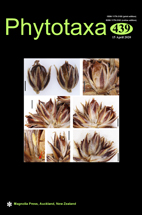Abstract
An Alternaria species was isolated from necrotic leaves of Vicatia thibetica in Hezheng county, Linxia Hui Autonomous Prefecture, Gansu, China. It was identified based on phylogenetic analyses and morphological characteristics. Five gene regions were used to determine its molecular phylogeny, including regions of internal transcribed spacer rDNA (ITS), translation-elongation factor 1 alpha (EF-1ɑ), glyceraldehydes-3-phosphate dehydrogenase (GAPDH), Alternaria major allergen (Alt a 1) and RNA polymerase second largest subunit (RPB2). The fungus was a novel species falling into a monoclade in the section Porri of Alternaria. Morphologically, it was considered as a new species with smaller conidial body and longer beak when compared with the similar species (A. dauci, A. herbiculinae, A. poonensis and A. saposhnikoviae). Based on both approaches, the fungus was demonstrated here as a new species, Alternaria vicatiae sp. nov..

